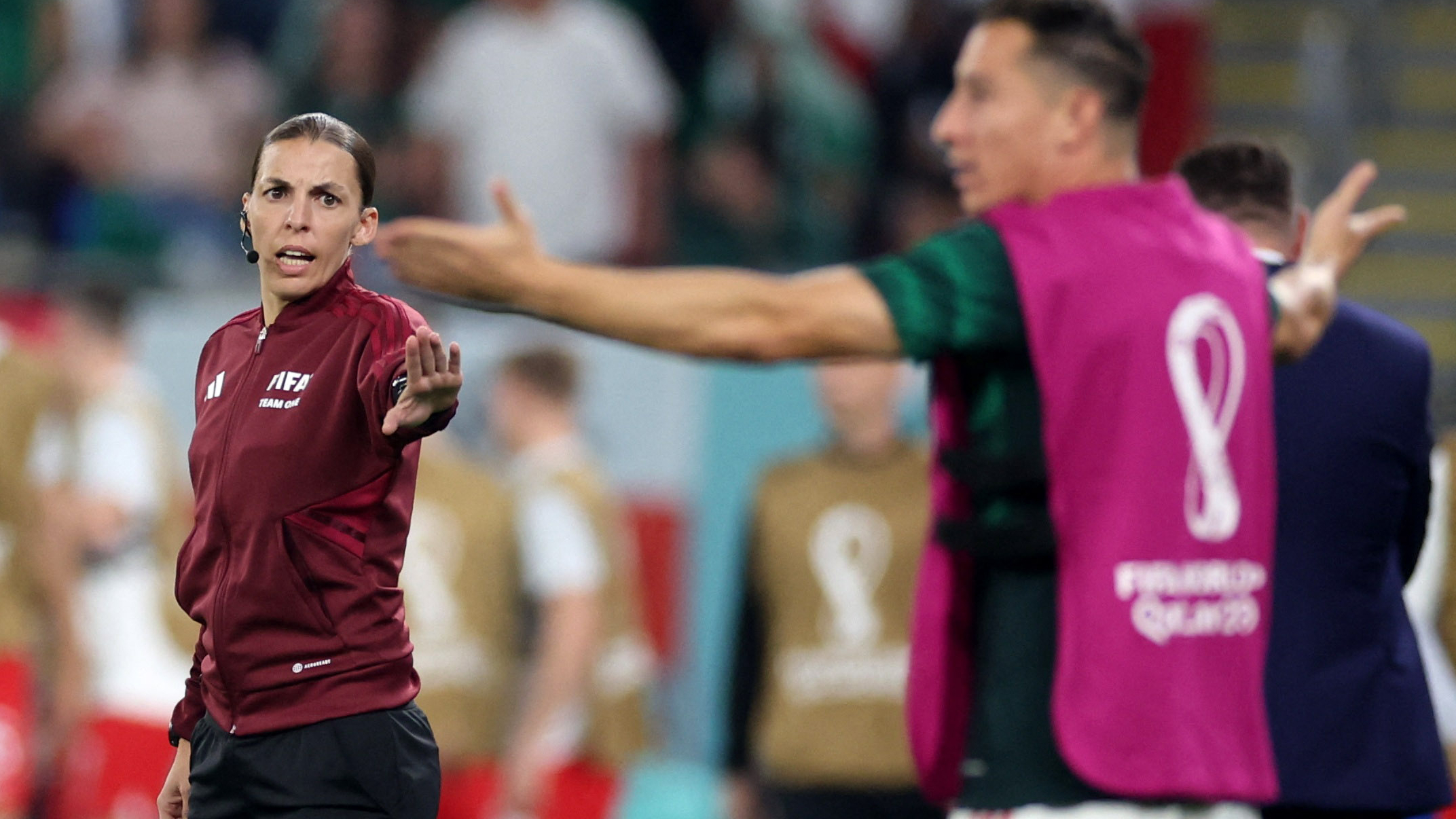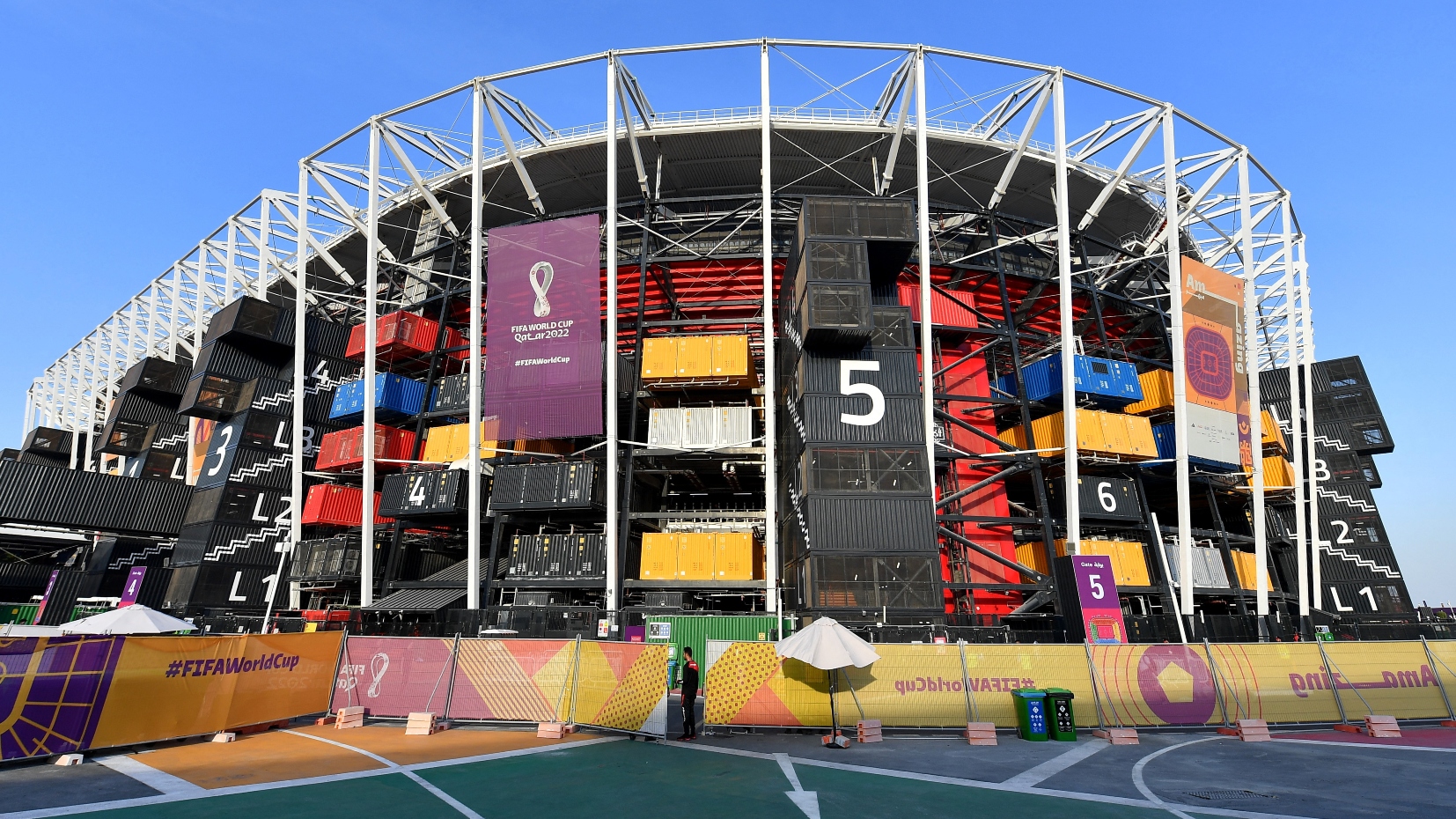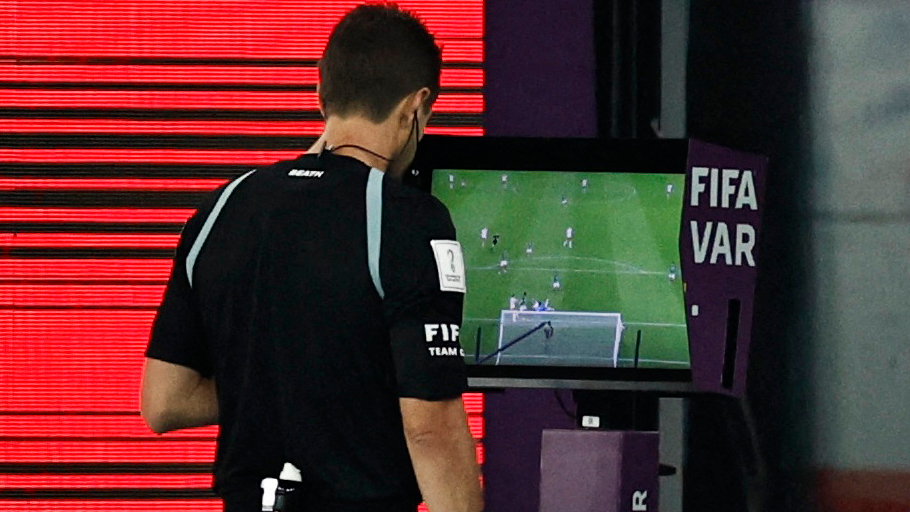00:55

New stadiums, female refs, new technology, new rules and a new season. All in a country half the size of Wales in the UK.
The World Cup in Qatar is well under way and there is no doubt this World Cup is a whole world of firsts. Why is this one so different?
WINTER
First up is the seasonal switch! This is the first World Cup in winter and the first held in a Gulf Arab state. FIFA has always had the World Cup in summer but moved the event to ease conditions for Qatar's sweltering heat.
Even towards the end of November, though, temperatures in the capital city of Doha can reach 32 degrees Celcius. To protect players and fans, all stadiums have fully functioning pitchside air-conditioning.
Stadiums are relying on a new cooling system designed by a Qatari professor nicknamed 'Dr. Cool.'
It cools outside air that flows into the arena through pipes and back out through grills in the stands and nozzles by the field. And with sustainability high on the agenda, solar energy powers it all.
REFEREES
Next up is diversity. France's Stephanie Frappart became the first female referee at a men's World Cup when she was the fourth official for Tuesday's match between Mexico and Poland at 974 Stadium.
Frappart is no stranger to the big stage. She was the first woman to referee a men's Champions League game in 2020.
Two other women are involved with Salima Mukansanga of Rwanda and Yamashita Yoshimi of Japan among the tournament's referees, along with three female assistant referees in Qatar.
There are 36 referees at the World Cup from 31 different countries.

Stephanie Frappart officiated at the match between Mexico and Poland. /Carl Recine/Reuters
Stephanie Frappart officiated at the match between Mexico and Poland. /Carl Recine/Reuters
STADIA
Grand, innovative, and undoubtedly new. Very new. Seven stadiums have been built for these 64 matches. All are within a 55-km radius of Qatar's capital Doha.
As mentioned, because of the temperatures, there's plenty of new technology within these arenas. All have a mix of cooling facilities, retractable roofs and shade-offering designs.
The Khalifa International Stadium, in operation since 1976, is the eighth arena and the only one that hasn't been purpose-built.
Lusail Iconic Stadium has the highest capacity (80,000) among the eight venues, but it's Stadium 974 that's historic.
It's made entirely from 974 shipping containers and modular steel and will become the first World Cup Stadium to be fully removed following the tournament.
Its design is a tribute to Qatar's history in worldwide trade and seafaring.

Stadium 974 is made of containers and will be dismantled after the World Cup. /Jennifer Lorenzini/Reuters
Stadium 974 is made of containers and will be dismantled after the World Cup. /Jennifer Lorenzini/Reuters
TECHNOLOGY
Science, innovation, technology. It's everywhere in Qatar. The Video Assistant Referee continues to get all the headlines, but we've actually seen this technology before, after its debut at Russia 2018.
Semi-automated offside technology is a first though, and it's all down to a motion sensor equipped football. Plus there are 12 cameras under the stadium roofs to track every kick and header with up to 29 data points on players.
The intention is to cut down on the stoppage time for offside reviews.
FIFA says its cameras measure these data points up to 50 times per second and once a referee confirms an offside, a 3D animation is shown on a giant screen for the crowd to enjoy (or not!). What happened to the old fashioned offside flag?!
Supporters better keep smiling in Qatar because there's no shortage of cameras. 15,000 of them are in operation equipped with facial recognition technology. Drones will also be flying to keep an eye on things.
And if World Cup players like their handheld technology, the FIFA has a new app to give them stats on their performance immediately after the game.

VAR continues to help officials make decisions at the World Cup./Hamad I Mohammed/Reuters
VAR continues to help officials make decisions at the World Cup./Hamad I Mohammed/Reuters
SUBS
It's always been three substitutions. Not anymore and that means even more decisions for the poor head coach bouncing up and down in their technical box!
Good news for tired legs though or the need for new formations. Football around the world has seen big changes with the effects of COVID, and teams are now allowed five subs.
European domestic leagues have already introduced the new rule and it's the same in Qatar. But there are certain windows for them to be made.
Managers can make five substitutions, but there are only three in-game opportunities to make changes. This doesn't include making subs at half-time. A sixth change will also be possible if a match goes to extra-time.